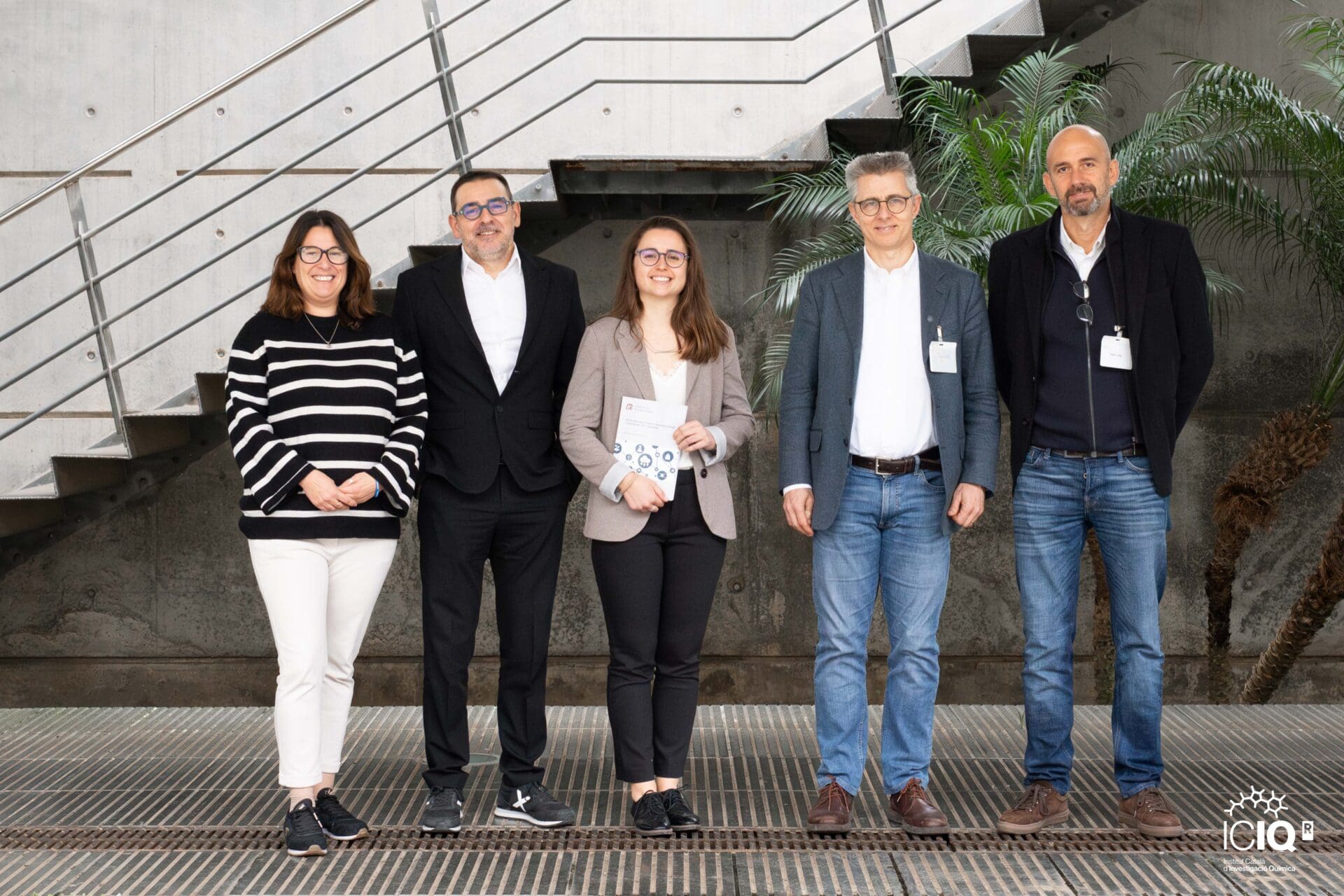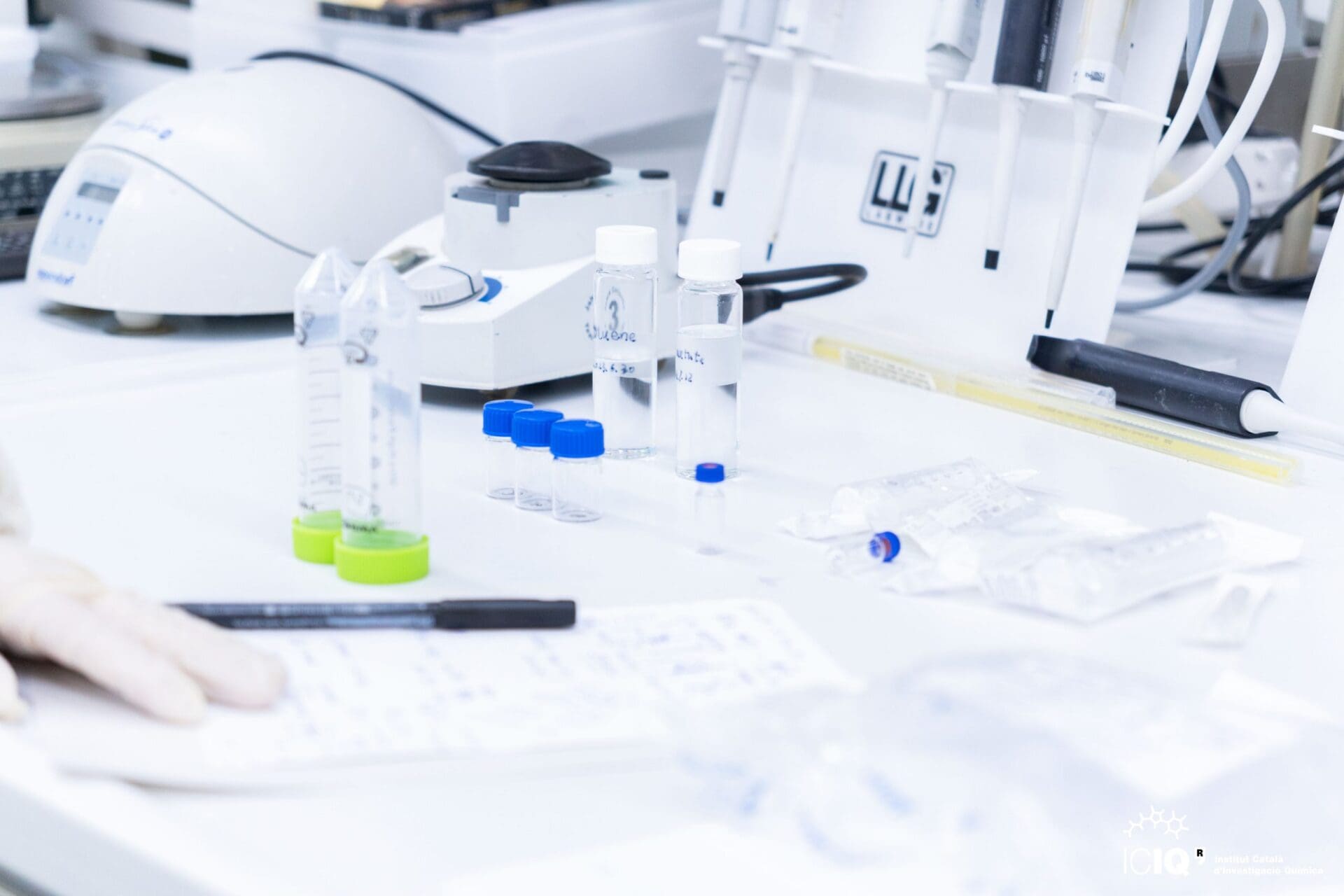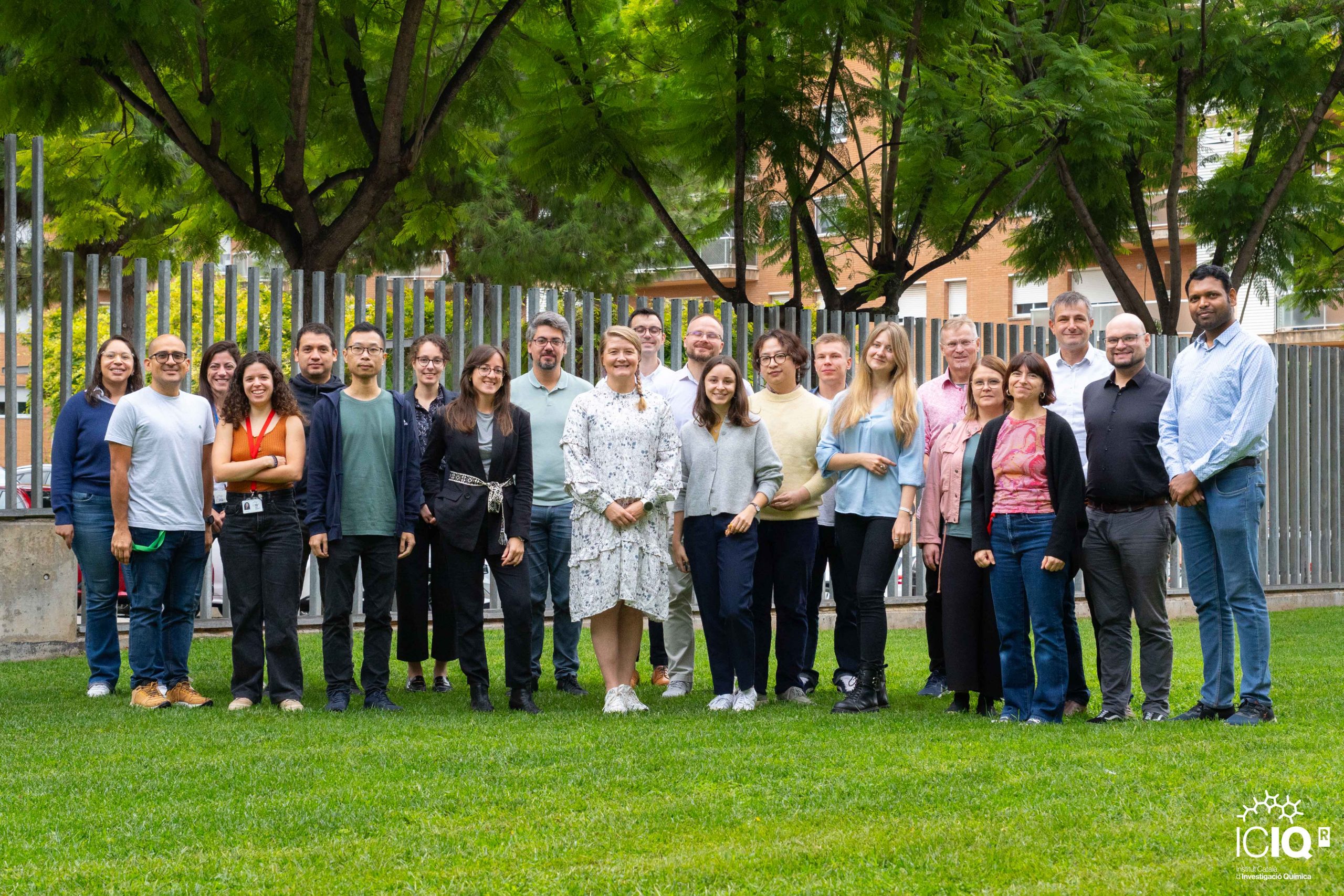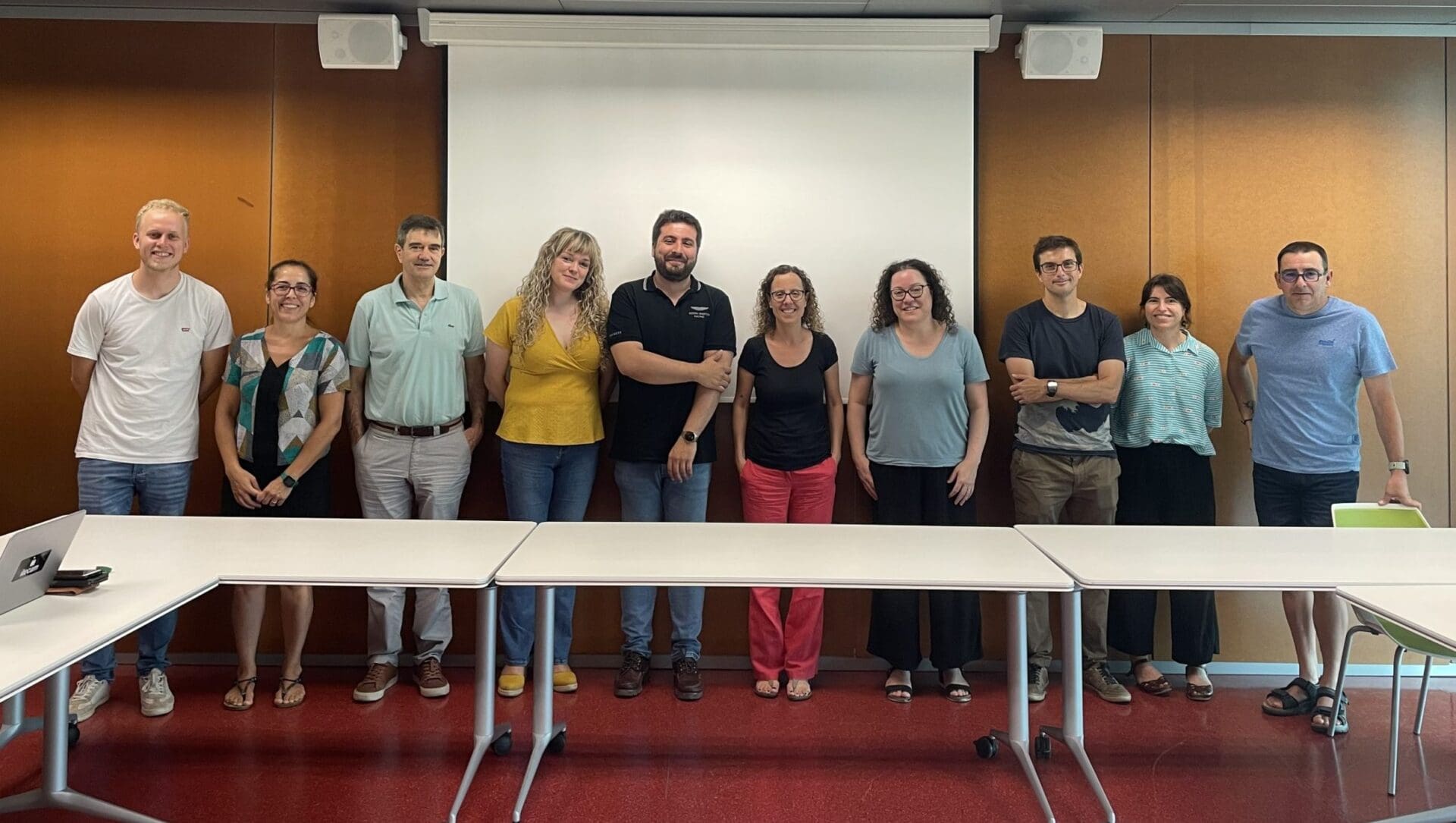Improving perovskite solar cells with selenophene-modified electron transport materials
28th noviembre 2024 -
ICIQ researchers present a collaborative study that explores the effect of chalcogen substitutions in fullerene derivatives to enhance efficiency and stability of perovskite solar cells
Researchers from the group of Prof. Emilio Palomares, ICIQ Director, have published the effects of chalcogen substitution in the chemical structure of phenyl-butyric acid methyl ester (PCBM) on the performance and stability of inverted perovskite solar cells (PSCs).
PCBMs are the most widely used electron transport materials in inverted PSCs. However, these compounds can suffer from lack of stability under irradiation. In the race for optimizing the PCBM-like derivatives, the thiophene moiety has garnered significant attention for enhancing the performance and stability of PSCs. The novelty in this study relies on the tests done on the selenophene derivative. This compound was compared to thiophene and furan substituted derivatives, and to the reference PCBM without a chalcogenophene moiety, demonstrating a better surface passivation and reduced interfacial charge recombination.
Our research reveals that the incorporation of selenophene into the fullerene structure significantly improves the performance and stability of perovskite solar cells. By carefully tuning the electron transport layer, we were able to reduce recombination losses and enhance charge mobility, which are crucial for advancing the efficiency of these next-generation solar cells.
Prof. Emilio Palomares, group leader and ICIQ Director
Additionally, this study investigates the differences between using the fullerene cages C70 and C60 in the PCBM chemical structure. The photovoltaic results demonstrate that the clue is in the adequate control of the thickness of the electron transport layer. Overall, the improvements result from the reduction in trap-assisted recombination, an increase in electron mobility, and improved charge extraction processes.
This work has been published in the journal ChemSusChem and has been highlighted as a Very Important Paper. The research presented is the result of collaborative work between ICIQ and the POLYMAT institute from the University of the Basque Country.
This work investigates the impact of a chalcogen atom substitution on PCBM derivatives that are used as the electron transport layer (ETL) in solar cells. POLYMAT prepared three PCBM derivatives with different chalcogen moieties, whereas the complete fabrication and advanced optoelectronic characterisation of the solar cells were conducted by the Palomares group. Through the analysis of the results, we were able to determine the molecular interactions at the ETL/perovskite interface.
Dr. José G. Sánchez, one of the main authors of this work
Reference publication
Reducing Interfacial Recombination in Inverted Perovskite Solar Cells With Selenophene-Substituted PCBM: Comparison With Thiophene and Furan Substitution
Cabrera-Espinoza, A.; Sánchez, J.G.; Li, W.; Collavini, S.; Ibañez-Etxeberria, M.; Kosta, I.; Ramírez-Como, M.; Martínez-Ferrero, E.; Palomares, E.; Delgado, J.L.
ChemSusChem 2024, e202400901, DOI: 10.1002/cssc.202400901.
Noticias relacionadas

Creemos un futuro más brillante
Únete a nuestro equipo para trabajar con investigadores de renombre, emprender proyectos innovadores y contribuir a avances científicos significativos.
Únete a nosotros!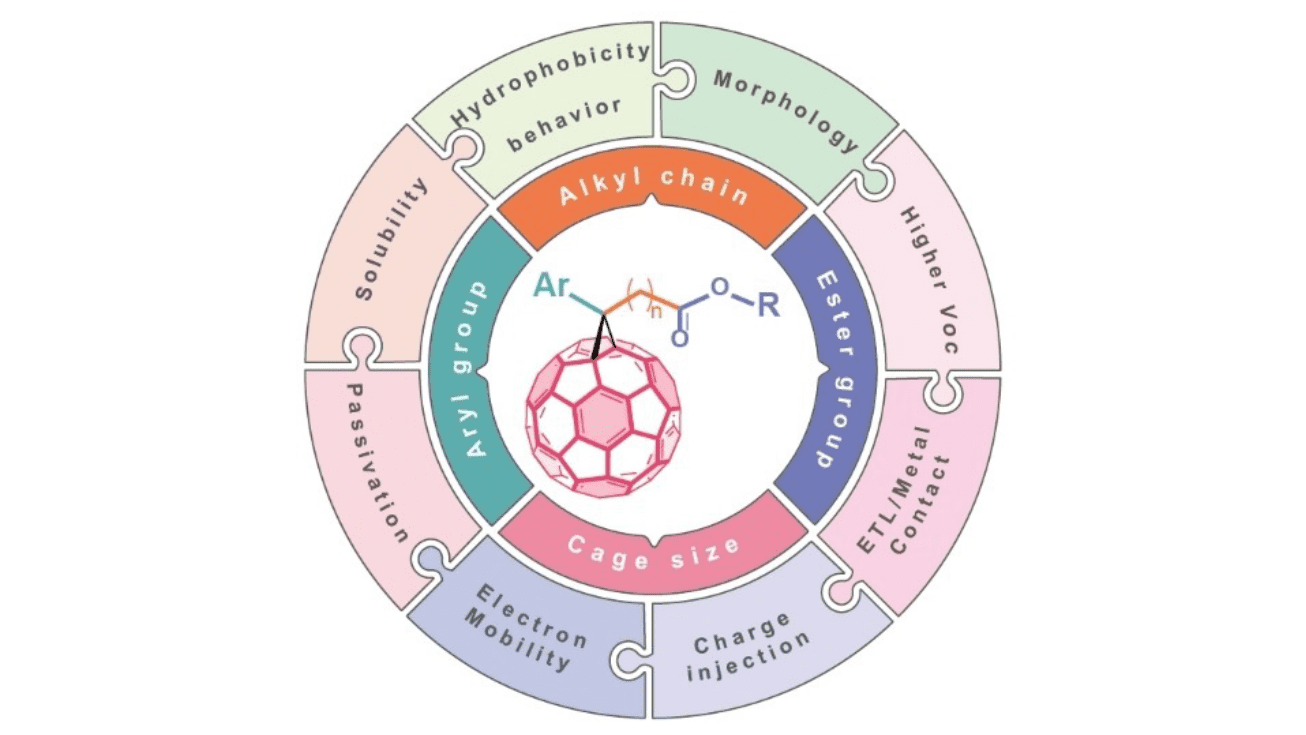






 17-02-2025
17-02-2025 